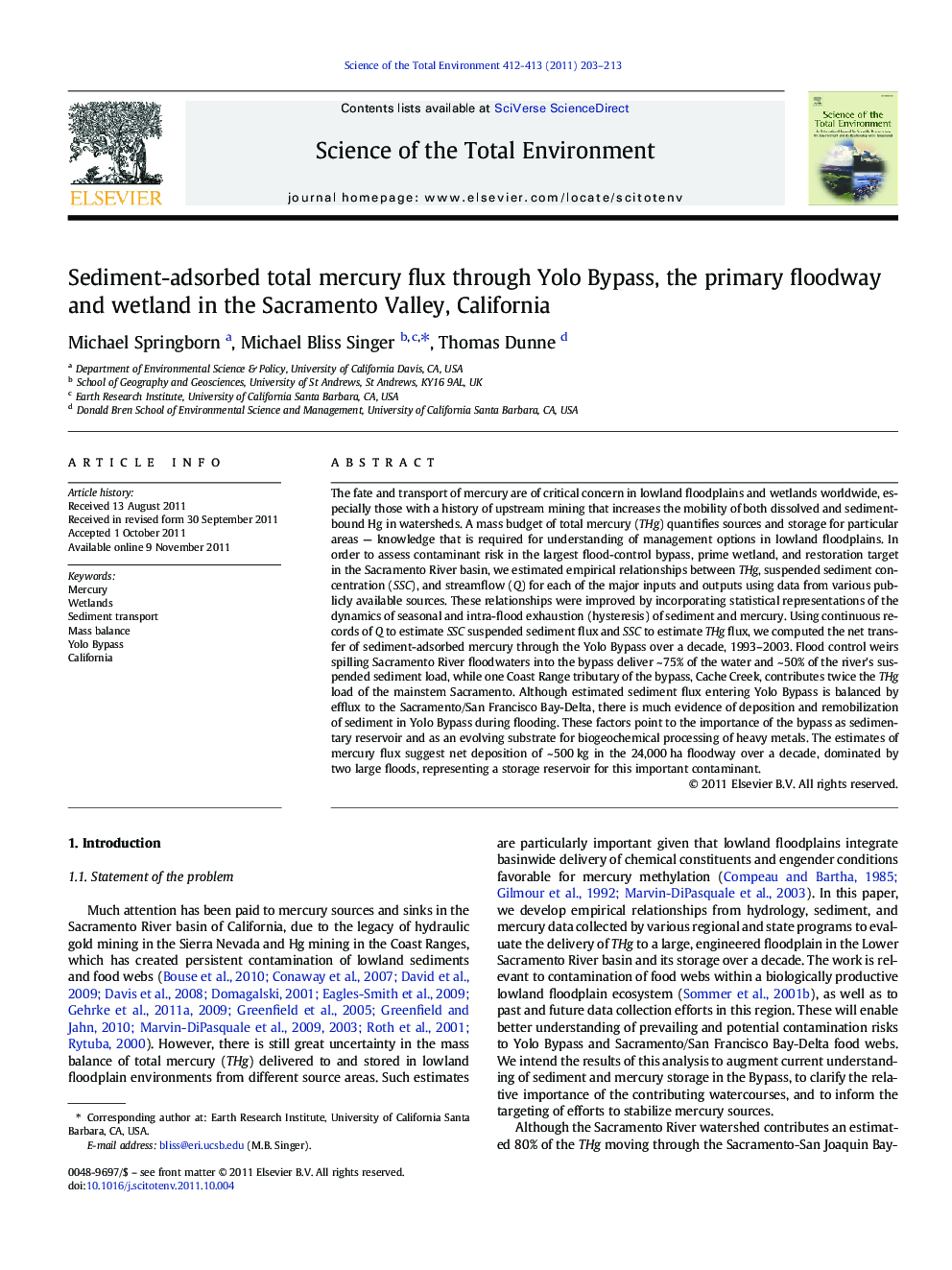| کد مقاله | کد نشریه | سال انتشار | مقاله انگلیسی | نسخه تمام متن |
|---|---|---|---|---|
| 4429716 | 1619836 | 2011 | 11 صفحه PDF | دانلود رایگان |

The fate and transport of mercury are of critical concern in lowland floodplains and wetlands worldwide, especially those with a history of upstream mining that increases the mobility of both dissolved and sediment-bound Hg in watersheds. A mass budget of total mercury (THg) quantifies sources and storage for particular areas — knowledge that is required for understanding of management options in lowland floodplains. In order to assess contaminant risk in the largest flood-control bypass, prime wetland, and restoration target in the Sacramento River basin, we estimated empirical relationships between THg, suspended sediment concentration (SSC), and streamflow (Q) for each of the major inputs and outputs using data from various publicly available sources. These relationships were improved by incorporating statistical representations of the dynamics of seasonal and intra-flood exhaustion (hysteresis) of sediment and mercury. Using continuous records of Q to estimate SSC suspended sediment flux and SSC to estimate THg flux, we computed the net transfer of sediment-adsorbed mercury through the Yolo Bypass over a decade, 1993–2003. Flood control weirs spilling Sacramento River floodwaters into the bypass deliver ~ 75% of the water and ~ 50% of the river's suspended sediment load, while one Coast Range tributary of the bypass, Cache Creek, contributes twice the THg load of the mainstem Sacramento. Although estimated sediment flux entering Yolo Bypass is balanced by efflux to the Sacramento/San Francisco Bay-Delta, there is much evidence of deposition and remobilization of sediment in Yolo Bypass during flooding. These factors point to the importance of the bypass as sedimentary reservoir and as an evolving substrate for biogeochemical processing of heavy metals. The estimates of mercury flux suggest net deposition of ~ 500 kg in the 24,000 ha floodway over a decade, dominated by two large floods, representing a storage reservoir for this important contaminant.
► A decadal mass balance for Hg was evaluated for a large lowland wetland/floodplain.
► Hg delivery is dominated by one relatively small tributary.
► Individual floods play a disproportionate role in Hg delivery.
► Net Hg deposition over the last decade is ~ 500 kg, but there is much evidence of annual deposition and erosion from Yolo Bypass.
Journal: Science of The Total Environment - Volumes 412–413, 15 December 2011, Pages 203–213